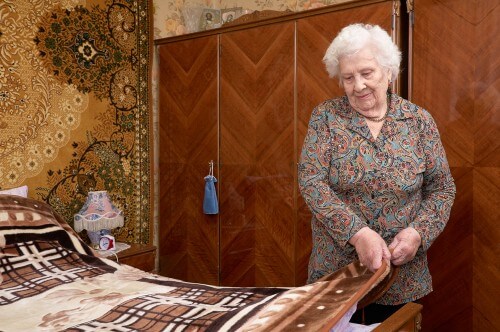Air quality in bed is a nightmare. What should be done to improve the quality of life in the place where we spend a third of our time?

The average American lives 78 years, of which he spends almost a third lying on a mattress. Brandon Burr, a PhD student at the University of Texas at Austin, studies air pollutants in the sleep microenvironment. In his latest study published in the journal Indoor Air, Burr covered a double mattress with sheets and sprinkled artificial dust on them to simulate microorganisms, fungal spores and dead skin cells that commonly accumulate in beds. Volunteers dressed in clean lab coats sat and rolled on the bed, inside a sealed room, and devices measured the particles that stuck to them and could be inhaled into their lungs. The concentration of the particles was indeed tiny and measured in parts per million (ppm), but even such a concentration can affect us because we spend eight hours a day in "intimate proximity" to the sheets and the mattress. In general, the time we spend indoors has led the US Centers for Disease Control and Prevention (CDC) to conclude that health risks such as asthma and chronic heart problems are higher when we are exposed to indoor air pollution than to outdoor pollution. Sleep time, blankets, sleeping habits and other factors therefore determine the "stuff that dreams are made of."
Pillow
Pillows act as a barrier against larger particles that can rise up from the mattress, according to an accompanying study in the journal "Building and Environment". However, if the pillow itself is dusty, it doubles the degree of dispersion of the particles.
mattress
A mattress made of foam and fibers often emits polluting gases, including volatile organic compounds, plasticizers and flame retardants. In a separate study published in the Journal of Environmental Science and Technology, Burr found that the problem is particularly severe with new mattresses, which emit nearly four times more volatile organic compounds (an average of 87 micrograms per square meter per hour) than old mattresses.
movement
When volunteers rolled in bed 360 degrees, like rolling a cigar, they kicked up significantly more dust than when they lay still. A swirling air current shakes the bedding and creates an air burst that shoots particles into the hot air coils rising from the body. For every million scattered particles, a sleeping person inhales between 100 and thousands of particles. In general, large particles, including dust mites, swirl more easily than small dust particles because they separate more easily from the fibers.
body temperature
Body temperature increases the rate at which mattresses emit polluting gases. Studies have linked childhood exposure to such gases to higher risks of fertility problems and allergies, but toxicity has not been proven.
Linen
Heavy blankets block the dust, but other bedding cannot contain the dust that rises from the warm body. According to another study by Burr's colleagues, covering the head with a blanket increases the inhalation of pollutants in the air 20 times. In another experiment, they found that people who slept on their backs inhaled less pollutants from the air than those who slept on their stomachs.
Cleaning
Good ventilation, washing the sheets and vacuuming the mattresses every week improve the air quality in the bedroom. "Removing the dust deposits," says Burr, "is a good way to reduce the bad."
The article was published with the permission of Scientific American Israel

One response
Ahh